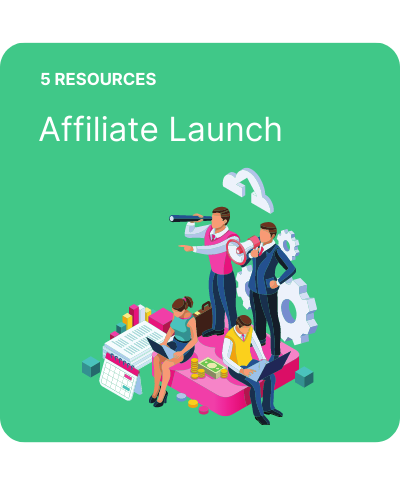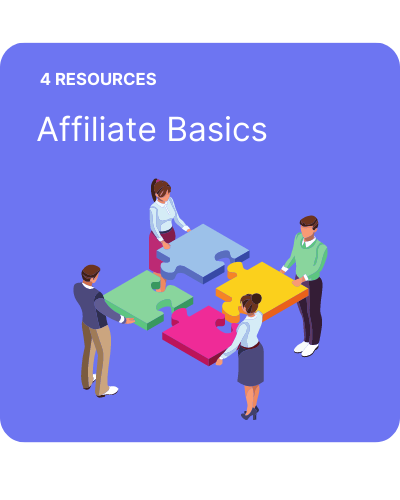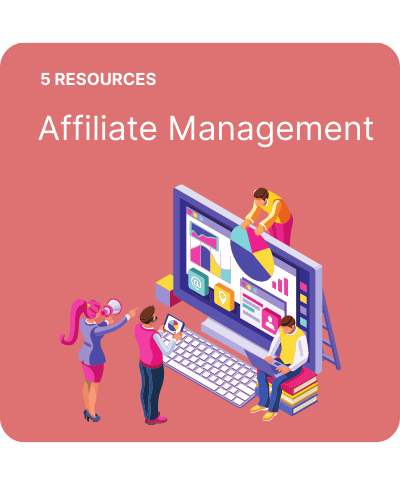How to improve affiliate conversion rates
A strong affiliate conversion rate can make or break your program. No matter your program size we all want as many publishers as possible driving orders.
The affiliate channel relies on the conversion rate. Without it, customers don’t order and affiliates won’t get paid a commission.
Also, if you aren’t converting your customers, then you risk lost earnings. Something that most brands can ill-afford to have right now.
To start to rectify a poor conversion rate, the first thing we need to do is analyse the numbers.
Yes, it is useful to have an awareness of the conversion rates in your affiliate network per partner. But, viewing them in a tool like Google Analytics will help you to find deeper issues that might be causing problems.
The solutions listed below won’t only apply to your affiliate channel. They are a skeleton guide that can be re-used for most digital channels.
If you have worked hard and even paid money to drive traffic to your website. You must give that traffic the best chance to convert.
1. Attribution
Affiliate managers can often be guilty of looking at the channel in isolation. Only observing the familiar network KPI’s and trying to influence them to drive success.
But, there are always better ways to add greater context to our channel numbers. As digital marketers, it is important to be aware of how our channel interacts with others in the customer sales funnel.
This is where how you attribute sales to different channels comes into play. By default, this is the last click wins rule. Whichever affiliate or channel that the customer went through last gets the credit. But, is that clear enough for us and does it incentivise every partner.
A metric that some networks include in their reporting is ‘Assisted Other Channels’. You may need to customise your reporting columns to see it. When you have, it will give you the number of orders that have been attributed to another digital channel.
Looking at this column, you might realise that the conversion rate is low from a partner because they are losing out to another channel. This enables you to then dig deeper to find out why.
Another column to look at is ‘Assisted Awin’. For each network, this will look different. But, informs us if any orders are being assisted to another affiliate. Again, this adds more clarity to any low conversion rates.
Should you find another channel is taking a lot of your affiliate sales, or a particular partner is swooping in at the end of the sales funnel. Then it might be time to refresh your attribution model and see how you can better incentivise the channel or certain affiliates.
2. Correct Landing Pages
If you were to analyse this manually it might take you days. Having to check every single link on an affiliates page and seeing where they land.
We can reverse engineer this in Google Analytics to make our lives easier.
Head to Acquisition > All Traffic > Source/Medium
Then click on your affiliate channel, you might have labelled it by ‘Affiliates’ or the particular network.
Above the main table of data, there is a button that says ‘Other’. Click on this and filter by ‘Campaign’ Now, if you have successfully added parameters to your affiliate links which I always recommend you do. Then your affiliates should show in the main table.
To find their landing pages, click ‘Secondary Dimension’ and choose ‘Landing Page’.
The table will now populate with the landing pages for each partner. Start to assess why some have lower conversion rates than others.
Could it be:
- A 404 code
- Old content live
- Timeout issue
- Slow load times
- Irrelevant content
3. Banners
We know that conversion rates from banners are low. But, does that mean we should just ignore them?
Affiliates, and especially content partners, like to include brand banners on their site. It shows an affinity to certain companies that their visitors might relate to and thus build trust.
Most affiliate programs show a list of generic banners and rarely offer anything more. If we were running a traditional display advertising campaign. We would tailor the content as best we can to the audience, wouldn’t we? So, why not do this with our affiliate partners.
Take a look at the partners currently using your banners on-site and formulate a strategy to improve conversions from them. If they have talked about a particular product you could re-enforce by adding it to the banner. Alternatively, increase click-through rates by adding an offer or unique discount to the banner for their audience.
Once you start to see an improvement from those partners. You can roll this out to more affiliates. Start with those that are similar to the previous partners and offer them an incentive to start using the banners. If need be, use the affiliates that have been successful as a case study to hook them in.
Don’t forget your side of the partnership though. Think about the entire customer journey to make sure you aren’t letting the side down.
If this affiliate is landing the customer on a category page. Are the products from the banner still in stock and easy to find? Could you auto-apply the code from that affiliate to the customer’s basket?
4. Dedicated Landing Pages
Research has shown that co-branded or dedicated landing pages can increase conversions by 5 or 6%. Of course, to caveat, a lot of this can be down to the brand and its website. Although, from my experience, it has always driven conversions up.
There are a few ways this strategy can also be beneficial for both your conversion rate and overall relationship with key affiliate partners.
Should you go ahead with this initiative, the best place to start is with the coupon sites. The work with them is less about convincing the customer to buy and more about stopping them from leaving.
Things to include on your landing page:
- Affiliate partners name (e.g. In partnership with Vouchercloud)
- The discount they are promoting
- Products/categories applicable for the offer
- Any terms that customers need to be aware of
What you are doing with a landing page is saying to the affiliate partner we value our relationship. So much so, we are willing to build you a dedicated page.
For the customer, it is re-enforcing the great offer they have and leading them down the purchase funnel.
5. Remove Distractions
When a customer lands on your site, you want them to seamlessly travel through the sales funnel.
Remove any distractions that don’t add immediate value and won’t encourage the customer to purchase.
A live chat pop-up might seem like a great idea. But, it can often be a distraction, especially if your chat is a basic automated robot.
Showcasing blog posts and trend-led content might inspire some customers to buy. But, I would argue that if your digital advertising is doing its job. Then getting them to a product or service page is more beneficial.
6. Partner Performance
This is a fairly straightforward one to find and analyse. If we look at the channel conversion rate as a whole, it might not be telling us the full story.
On paper, the rate might not be where you want it to be. Though it could be the result of a few partners rather than the entire channel.
Start to group those with a low conversion rate. Are there any trends that you can spot?
It might be that your Google shopping partners aren’t converting well. This could be down to your product feed not being up to scratch rather than anything more.
7. Tech Affiliates
The benefit of the affiliate channel is there is a wealth of different types of publishers available. There are your typical cashback, coupon or content partners. Aside from these, there is a fair amount of technology partners as well.
Technology partners enable you to implement tech solutions onto your site without being tied into a contract. The additional advantage is that you will only pay them on your CPA affiliate model.
Some of the ways you can utilise them is for:
- Increasing AOV
- Upselling products
- Reducing site abandonment
- Basket abandonment
- Display retargeting
- AI product recommendations
No matter your website issues. There is sure to be a way that these technology partners can help to improve your overall affiliate channel conversions.
8. Publisher Type
The greater the quality of the audience the better the chance of conversion rates.
Smaller affiliates, although being more cost-effective for brands, typically have a less engaged audience. Customers are familiar with the large coupon and cashback sites so trust them to have the best deals.
Therefore the larger affiliates have less drop-off and higher conversion rates.
If you have been put off paying the increased media fees that the bigger affiliates bring. It may be harming your conversions rates.
Approach with caution, select a few partners and test their media packages to see how things change.
9. Coupons / Discounts
Although some brands seemed to be vehemently against coupons, there is no denying their power to convert customers.
Customers are savvy and I have seen that despite the product type or sales value, they like to use discounts. The preconceived notion that luxury customers don’t search for coupons has been proven wrong numerous times.
If you are still unsure about sending discounts out into the ether. Why not test with a few affiliates. You could choose just content partners or influencers for example. This can overcome being seen as a discount brand but still help drive more orders.
Ensure where you can that a unique code is used, preferably referencing the affiliate who is promoting it.
To remove the chance of code leakage attribute to the partner in your network. This is a function most networks have and means the right affiliate gets paid the commission even if a partner steals (and promotes) the coupon.
10. Competitor Analysis
At all times, it is imperative to keep a close eye on what your competitors are up to.
Building systems and habits that remind you to include this in your affiliate management duties will only benefit your program.
In a lot of networks, they provide the conversion rates for different brands. If you can get access as a publisher this can show you how your brand compares.
Once you have a grasp on the conversion rate and if you are falling behind start to look at how they are promoting themselves.
- What offers do they provide?
- What are their cashback rates?
- Do they use a greater sense of urgency in their copy?
- What is the customer journey when they land on-site?
- Are they working with any publisher you aren’t?
Though this won’t give you the magic formula to improve your performance. It should be able to point you in the right direction.
In this article, we have covered some very useful ways to improve your conversion rates from the affiliate channel.
There isn’t always a quick fix though. This might take a little trial and error before you get to where you want to be. But, I hope this pushes you forward to start making some changes.



